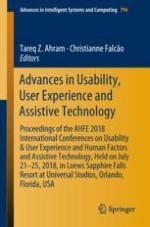2019 | OriginalPaper | Buchkapitel
Effectiveness of Eye-Gaze Input Method: Comparison of Speed and Accuracy Among Three Eye-Gaze Input Method
verfasst von : Atsuo Murata, Makoto Moriwaka
Erschienen in: Advances in Usability, User Experience and Assistive Technology
Aktivieren Sie unsere intelligente Suche, um passende Fachinhalte oder Patente zu finden.
Wählen Sie Textabschnitte aus um mit Künstlicher Intelligenz passenden Patente zu finden. powered by
Markieren Sie Textabschnitte, um KI-gestützt weitere passende Inhalte zu finden. powered by
